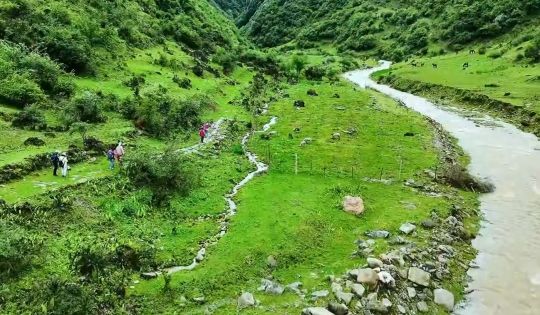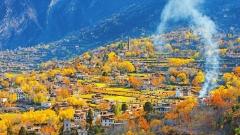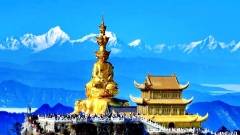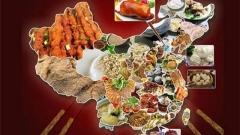The Ancient Tea-Horse Road (茶马古道) was once a vital trade route linking the tea-producing regions of Sichuan and Yunnan with Tibet and beyond. Stretching across high mountains, deep valleys, and remote villages, this historic path carried tea, horses, salt, and cultural exchanges for centuries. In Sichuan, the route offers not only a journey through breathtaking landscapes but also a deep dive into the living history of Southwest China.
A Brief History of the Tea-Horse Road
Dating back to the Tang and Song dynasties, the Tea-Horse Road was more than a commercial route—it was a cultural bridge. Sichuan merchants would transport compressed tea bricks to Tibet, where they were exchanged for sturdy Tibetan horses. These horses were essential for China’s military and agricultural needs, while the tea was a daily necessity for Tibetans. The trail’s steep terrain and unpredictable weather made it one of the most challenging trade routes in the world.

Key Sections to Explore in Sichuan
Sichuan’s segment of the Tea-Horse Road is dotted with ancient towns, ethnic minority villages, and historic landmarks.
-
Kangding – A bustling Tibetan-Chinese town where traders once gathered. Known as the “Gateway to Tibet,” Kangding still echoes with folk songs and vibrant market scenes.
-
Luding Bridge – This historic chain bridge across the Dadu River was a strategic crossing for caravans. Today, it’s a must-see heritage site.
-
Danba Tibetan Villages – Famous for its watchtowers and stone houses, Danba showcases the architectural and cultural richness of the Tibetan Qiang people.
-
Ya’an – One of the main tea-producing centers of Sichuan, Ya’an has preserved its tea gardens and traditional processing methods for centuries.
Cultural Experiences Along the Way
Traveling along the Tea-Horse Road in Sichuan is as much about culture as it is about scenery. You can sip freshly brewed Tibetan butter tea in a highland village, watch a traditional horse-riding performance, or visit local markets selling yak butter, handmade crafts, and preserved yak meat. Many towns host annual festivals featuring music, dance, and religious rituals passed down for generations.
Best Time to Visit
The best seasons to explore are spring (April–June) and autumn (September–October) when the weather is mild, the mountain roads are safer, and the landscapes are at their most colorful. Summer can bring heavy rains, while winter offers fewer crowds but colder conditions, especially at higher altitudes.
Travel Tips for First-Time Visitors
-
Transportation: While some parts of the road are accessible by car or bus, certain scenic stretches are best explored on foot for an authentic experience.
-
Altitude: Parts of western Sichuan are at high elevation. Take time to acclimatize, especially if continuing toward Tibet.
-
Packing: Layered clothing, comfortable walking shoes, and a rain jacket are essential.
-
Local Etiquette: Respect local customs, especially in Tibetan and Qiang villages—ask before taking photos and dress modestly in monasteries.
Conclusion
Walking in the footsteps of ancient traders along the Tea-Horse Road in Sichuan is a journey through both time and culture. From historic towns to mountain passes, every step tells a story of resilience, exchange, and connection. Whether you’re a history enthusiast, a cultural traveler, or simply seeking epic landscapes, this legendary route offers an unforgettable adventure.











